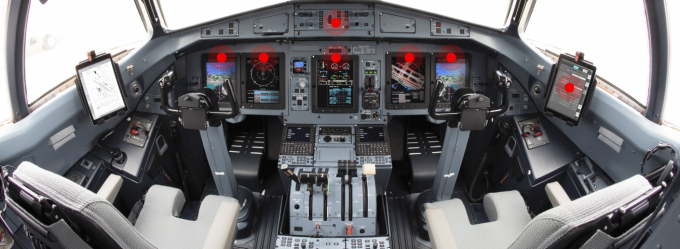FedEx feeder operator trials Reliable autonomous freighter
The air cargo industry took another step toward unmanned freighter operations last month when Reliable ...
TFII: SOLID AS USUALMAERSK: WEAKENINGF: FALLING OFF A CLIFFAAPL: 'BOTTLENECK IN MAINLAND CHINA'AAPL: CHINA TRENDSDHL: GROWTH CAPEXR: ANOTHER SOLID DELIVERYMFT: HERE COMES THE FALLDSV: LOOK AT SCHENKER PERFORMANCEUPS: A WAVE OF DOWNGRADES DSV: BARGAIN BINKNX: EARNINGS OUTODFL: RISING AND FALLING AND THEN RISING
TFII: SOLID AS USUALMAERSK: WEAKENINGF: FALLING OFF A CLIFFAAPL: 'BOTTLENECK IN MAINLAND CHINA'AAPL: CHINA TRENDSDHL: GROWTH CAPEXR: ANOTHER SOLID DELIVERYMFT: HERE COMES THE FALLDSV: LOOK AT SCHENKER PERFORMANCEUPS: A WAVE OF DOWNGRADES DSV: BARGAIN BINKNX: EARNINGS OUTODFL: RISING AND FALLING AND THEN RISING

Aircraft manufacturer ATR is bullish on the market for turboprop freighters, which make up more than 90% of the regional freighter fleet.
The company released its market outlook this week, which envisages the global turboprop freighter fleet to grow from 380 units last year to 550 in 2041. That’s an increase of 45%.
The forecast’s authors see significant untapped opportunities for operators and point to robust growth drivers – from e-commerce to shippers’ heightened focus on making sure supply chains do not suffer disruptions.
But apparently they did not address the question of who will fly all these planes.
Regional freighter airlines have been chronically short of pilots, a situation exacerbated by US legislation mandating that commercial pilots must have logged at least 1,500 flight hours.
The outbreak of Covid-19 radically changed the situation, as airlines around the planet furloughed thousands of pilots – suddenly, regional cargo carriers were inundated with job applications, just as the market was going into expansion mode.
But the windfall did not last. As passenger airlines ramped up their flying, pilots soon were back in high demand as the numbers fell short of the pace of recovery. Carriers resorted to desperate measures to fill their cockpits and have been recruiting aggressively ever since.
“The big guys are hiring as fast and furiously as they can, and that’s a drain on regional carriers,” said Stan Bernstein, president of the Regional Air Cargo Carriers Association (RACCA). And some big carriers offer $150,000 sign-on bonuses, he added.
Young pilots often take co-pilot positions on regional cargo carriers to build up their flight hours and, in the current situation, they are not likely to stay once they have filled their 1,500 hours in the air.
“The second they arrive in the left seat, regional passenger carriers knock on their door, saying ‘we’ve got a great deal for you’,” Mr Bernstein said.
As a result, the pilot shortage is back for regional cargo carriers with a vengeance – “I’m afraid it has reached the acute stage,” he said.
For the carriers the situation is immensely frustrating. They see opportunities to grow; aircraft are available for expansion, but they cannot pursue these opportunities because they are struggling to man their existing operation and keep the business running, Mr Bernstein noted.
And, short of a recession that would curb commercial flying and prompt passenger airlines to implement another hiring freeze, he sees no chance of the pilot shortage easing for RACCA member airlines any time soon.
If anything, the situation looks set to deteriorate faster. The hiring frenzy extends beyond active pilots to flight instructors, thinning out the personnel of flight schools and slowing the pace of training, Mr Bernstein reported. This depletes the pool of job entrants.
One silver lining he sees, however, is the chance that the pressure from the pilot shortage may accelerate the path to unmanned flight operations. This would have a profound impact on regional cargo activities, he predicted.
“The first unmanned flights will not carry passengers between big hubs. It will start with cargo on a regional route over a rural area, with a Cessna Caravan pilot on an autonomous aircraft flying for a year. Then we will see the first truly autonomous flight with one of our members,” he said.
He harbours no illusions that it will still take years to get there, explaining: “There will be lots of experiments, but it’s not going to be a viable business for a couple of years yet.”
A lot of questions have to be addressed, such as how autonomous aircraft will be integrated into the air traffic control system and under what standards unmanned operations will be certified.
These tasks will fall to the Federal Aviation Administration (FAA), but the authority itself needs to develop and set up a new department to deal with these issues. This is easier said than done, Mr Bernstein noted. The FAA itself is struggling with a desperate shortage of manpower, he said.
Comment on this article